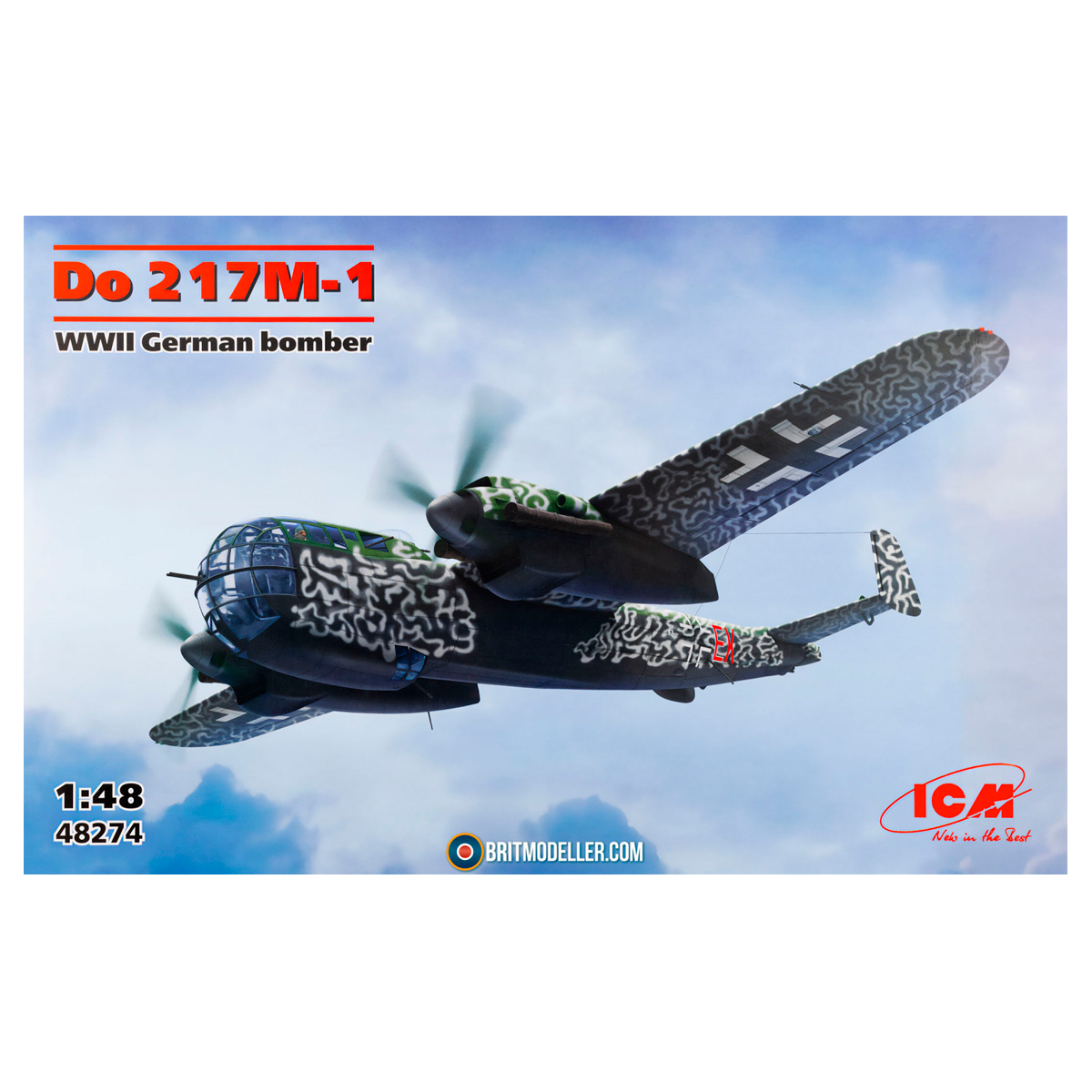1/48 Do 217M-1, WWII German bomber
53,99€
Only 1 left in stock

*Please check our Privacy Policies to see how to we use your personal data.
*Por favor revisa nuestra Política de Privacidad para ver como tratamos tus datos personales
ICM 1/48 Do 217M-1, WWII German bomber
The development of the Do 217M-1 bomber was driven by a shortage of BMW 801D engines, which were originally intended for the Do 217K-1 variant. By 1943, the territory of the Reich was already under heavy bombardment by Allied air forces, and the BMW 801D engines were urgently needed for the production of both day and night fighters for air defense.
As an alternative solution, Dornier engineers adapted the Do 217K-1 design to accommodate a different engine — the DB 603. This led to the creation of the new Do 217M-1 variant. The powerful DB 603A engines, delivering 1,750 hp and fitted with four-bladed propellers, significantly improved the aircraft’s flight performance, increasing its top speed to 557 km/h. However, this came at the cost of a slightly reduced operational range.
The defensive armament and bomb load of the new variant remained identical to those of the Do 217K. The Do 217M-1 aircraft were produced in parallel with the Do 217K-1 and remained in service with Luftwaffe bomber and reconnaissance squadrons until the end of the war.
ICM 1/48 Do 217M-1, WWII German bomber
El desarrollo del bombardero Do 217M-1 se vio impulsado por la escasez de motores BMW 801D, que originalmente estaban destinados a la variante Do 217K-1. En 1943, el territorio del Reich ya estaba siendo objeto de intensos bombardeos por parte de las fuerzas aéreas aliadas, y los motores BMW 801D se necesitaban con urgencia para la producción de cazas diurnos y nocturnos para la defensa aérea.
Como solución alternativa, los ingenieros de Dornier adaptaron el diseño del Do 217K-1 para acomodar un motor diferente: el DB 603. Esto condujo a la creación de la nueva variante Do 217M-1. Los potentes motores DB 603A, con una potencia de 1750 CV y equipados con hélices de cuatro palas, mejoraron significativamente el rendimiento de vuelo del avión, aumentando su velocidad máxima a 557 km/h. Sin embargo, esto supuso una ligera reducción del alcance operativo.
El armamento defensivo y la carga de bombas de la nueva variante seguían siendo idénticos a los del Do 217K. Los aviones Do 217M-1 se fabricaron en paralelo con los Do 217K-1 y permanecieron en servicio en las escuadras de bombarderos y reconocimiento de la Luftwaffe hasta el final de la guerra.




 Request of SDS product data file / Product security
Request of SDS product data file / Product security